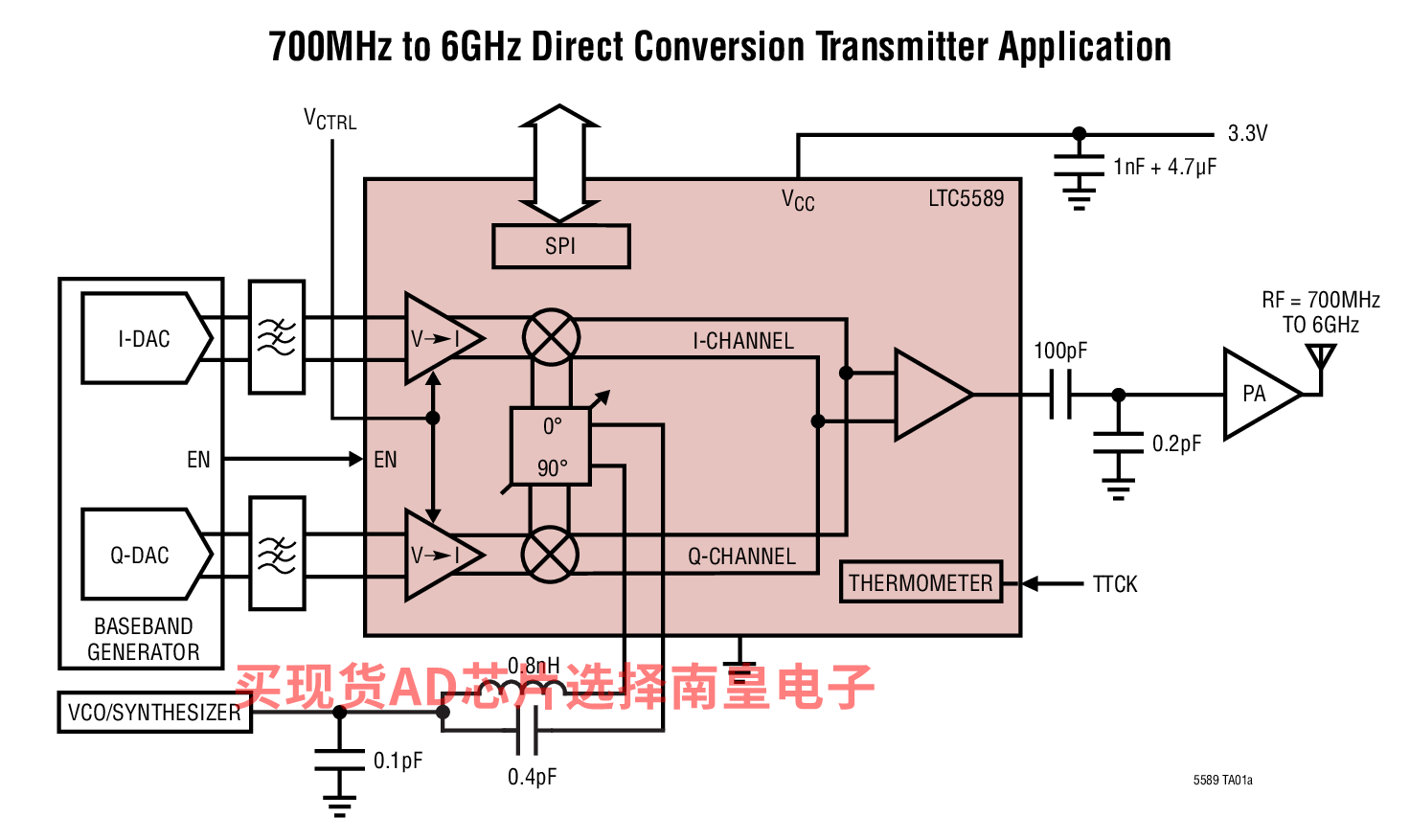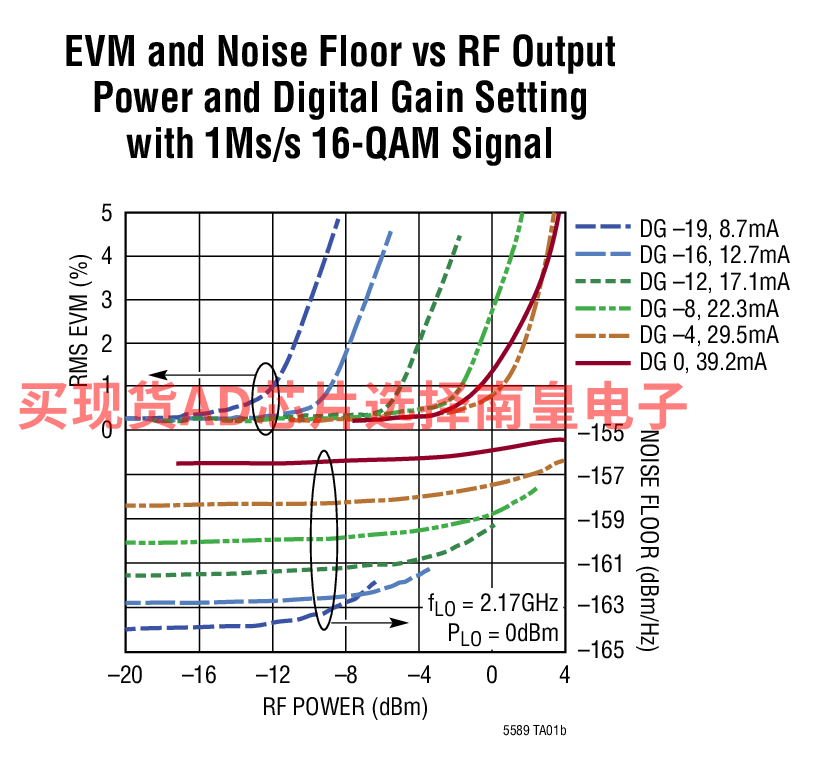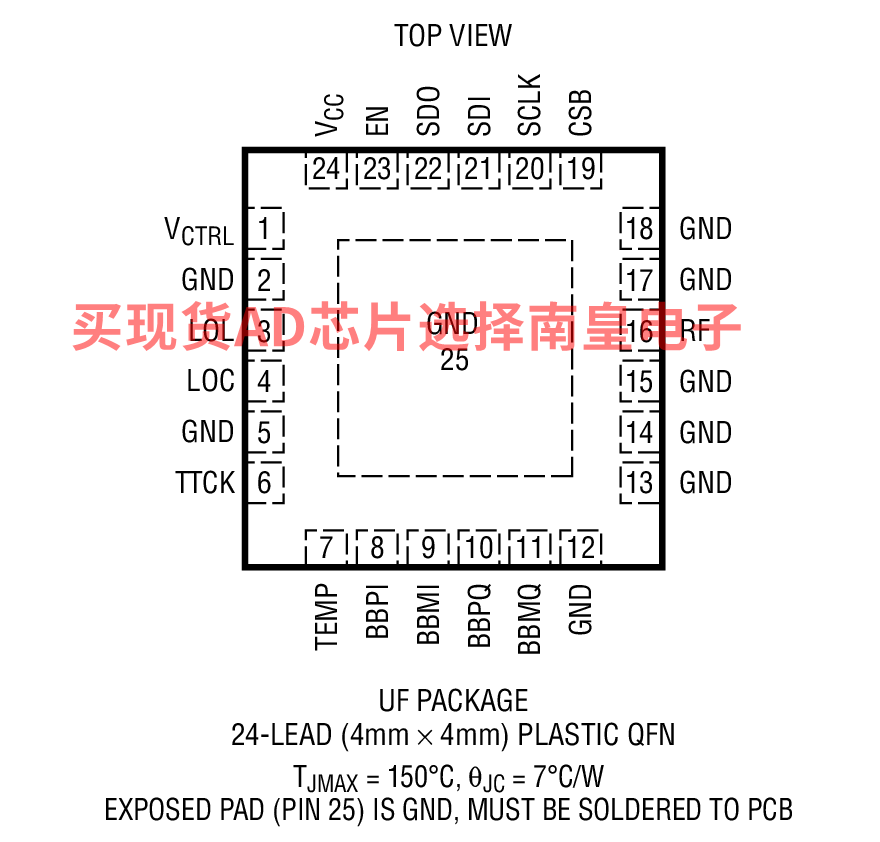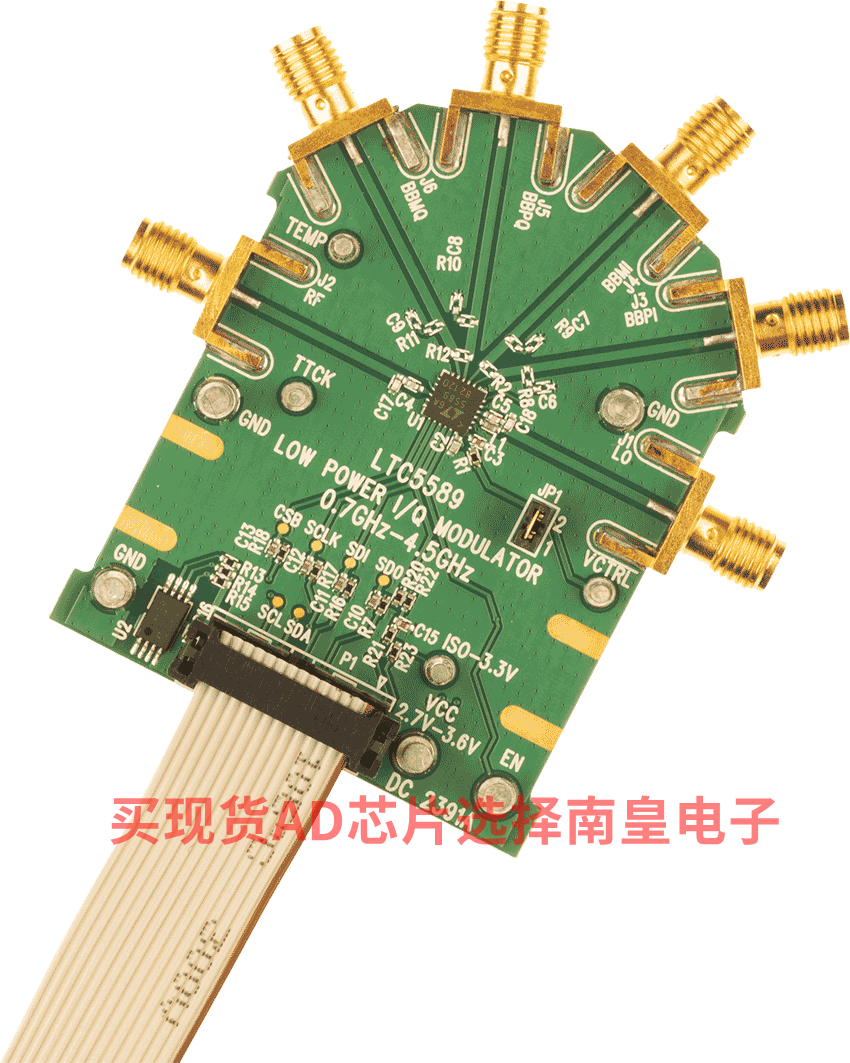
- 制造厂商:AD
- 产品类别:I-Q调制器和解调器
- 技术类目:I/Q调制器
- 功能描述:700MHz 至 6GHz 低功率直接正交调制器
- (AD代理渠道,提供当日发货、严格的质量标准,满足您的目标价格)

LTC5589 是一款专为低功率无线应用而设计的直接转换 I/Q 调制器,其可在一个 RF 载波上实现差分基带 I 和 Q 信号的直接调制。通过给 I 和 Q 输入端施加 90° 相移信号可以实现单边带调制或边带抑制上变频。可把 I/Q 基带输入端口 AC 或 DC 耦合至一个具有大约 1.4V 共模电压电平的电源。SPI 接口负责控制电源电流、调制器增益,并提供 I 和 Q 增益及相位失衡的调节以优化 LO 载波馈通和边带抑制。可利用正弦波或方波 LO 驱动来驱动 LO 端口。LO 和 RF 端口上的一个固定 LC 网络可覆盖 700MHz 至 6GHz 的工作范围。可启动一个片内温度计以补偿增益-温度变化。采用一个片内二极管能够完成更加准确的温度测量。此外,还可以采用一个连续模拟增益控制 (VCTRL) 引脚来实现快速功率控制。
Applications
- 无线传声器
- 电池供电型无线电装置
- 矢量调制器
- 2.45GHz 至 5.8GHz 发送器
- 软件定义无线电 (SDR)
- 军用无线电
- 频率范围:700MHz 至 6GHz
- 低功率:2.7V 至 3.6V 电源;29.5mA
- 低的 LO 载波泄漏:在 1.8GHz 时为 –43dBm
- 边带抑制:在 1.8GHz 时为 –50dBc
- 输出 IP3:在 1.8GHz 时为 19dBm
- 低RF 输出噪声层:-157dBm/Hz (在 30MHz 偏移、PRF = 1.8dBm、fRF = 2.17GHz)
- 正弦波或方波 LO 驱动
- SPI 控制:
- 可调增益: 19dB (1dB 步进)
- 产生的电源电流:9mA 至 39mA
- I/Q 偏移调节:–64dBm LO 载波泄漏
- I/Q 增益 / 相位调节:–1dBc 边带抑制
- 24 引脚 4mm x 4mm 塑料 QFN 封装
LTC5589IUF#PBF,封装:24-Lead QFN (4mm x 4mm x 0.75mm w/ EP),包装形式及数量:管装,91,工作温度:-40 to 85C,AD官网报价:6.28(100-499个);5.18(1000+个)
LTC5589IUF#TRPBF,封装:24-Lead QFN (4mm x 4mm x 0.75mm w/ EP),包装形式及数量:卷带,2500,工作温度:-40 to 85C,AD官网报价:6.28(100-499个);5.18(1000+个)
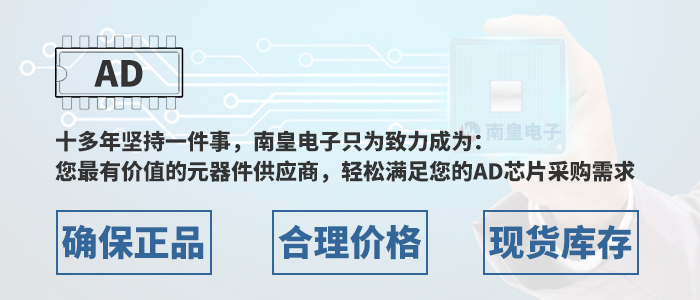
DC2391A:LTC5589 Demoboard | 700MHz to 3.8GHz Low-Power I/Q Modulator
Demonstration circuit 2391A is optimized for evaluation of the LTC5589 low power I/Q modulator up to 4.5GHz. For frequencies above 4.5GHz, LO matching circuit on the DC2391A demo board can be easily modified for improved image rejection performance. Refer to data sheet for additional information. The four balanced I- and Q-baseband input ports can be either AC-coupled with internal bias supplied, or DC-coupled from a source with a common-mode voltage level of about +1.4V. The SPI interface is used to set internal registers which control the gain, optimum center frequency, I-offset, Q-offset and sideband suppression. In addition to the digital gain control with 1dB steps, there is an analog gain control, VCTRL. An on?chip thermometer can be used to compensate for the gain vs temperature variations using a digital gain control change. The update can either be automatically triggered, or entirely switched off.


